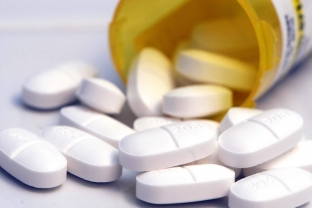What are actinomycetes, and under what conditions do they provoke the development of actinomycosis, we considered in a previous article on estet-portal.com. Actinomycosis is a chronic purulent disease, which is accompanied by the formation of dense infiltrates on the skin with foci of fluctuation.
Treatment of actinomycosis is complex in various combinations depending on localization and clinical manifestations — iodine preparations, antibiotics, immunocorrective and general tonic agents, actinolysate, local treatment with ointments, physiotherapeutic procedures are prescribed and, if necessary, surgical intervention is recommended.
Aspects of treatment of actinomycosis with antibacterial drugs
Iodine preparations (up to 3 g of potassium iodide per day), which previously dominated the treatment of actinomycosis, can now be used in combination with antibiotics or X-ray therapy, as an additional tool for softening and resolving the infiltrate.
Antibiotics take the leading place in the treatment of actinomycosis. Traditional therapy for actinomycosis involves intravenous penicillin.
An antibiotic is given at 18–24 million units daily for 2–6 weeks, followed by oral penicillin, amoxicillin, or ampicillin for 6–12 months.
In milder cases, in particular with cervico-maxillofacial actinomycosis, less intensive treatment with short courses of antibiotic therapy is sufficient. What methods of treatment of actinomycosis are used together with antibiotic therapy, read further on estet-portal.com. There is experience of effective short-term treatment of actinomycosis with imipenem for 6-10 weeks and ceftriaxone daily for 3 weeks. Antimicrobial therapy is continued for some time after the disappearance of symptoms to prevent relapse.
Groups of antibacterial drugs most commonly used in the treatment of actinomycosis:
- tetracyclines;
- penicillins;
- carbopenems;
- lincosamines;
- aminoglycosides;
- cephalosporins.

Treatment of actinomycosis with increased resistance to antibacterial drugs
In the treatment of actinomycosis, it is also necessary to take into account the adhering pathogenic microflora, which may show increased resistance to antibiotics, which is explained by the long-term previous use of various chemotherapy drugs.
Metronidazole is used in the treatment of actinomycosis to influence the accompanying flora, a good anti-inflammatory effect is shown by the use of sulfanilamide preparations.
When a mycotic infection is attached, antifungal drugs are prescribed: fluconazole, itraconazole, terbinafine, ketoconazole, etc.
Immunocorrecting agents. For the correction of immunodeficiency, diucifon is shown inside — 0.1 g 3 times a day or intramuscularly in the form of a 5% solution of 5 ml every other day for 3-4 weeks. The immunocorrective drug cycloferon — 2 ml intramuscularly every other day, 10 days.
Characteristics of the main methods of treatment of actinomycosis
Fortifying therapy stimulates the body's reactivity and increases the effectiveness of immunotherapy. Detoxification therapy is carried out with intravenous Hemodez solutions, 5% glucose solution, etc. In order to activate regeneration, autohemotherapy is used — weekly, for a total of 3 & ndash; 4 transfusions. Vitamins are prescribed in average therapeutic doses.
The main treatments for actinomycosis include:
- immunotherapy;
- local treatment of infiltrates;
- physiotherapy manipulations;
- surgical treatment.
Actinolysate immunotherapy promotes the accumulation of specific immune bodies and improves treatment outcomes by reducing the amount of antibacterial agents and avoiding unwanted side effects. Actinolysate is administered intramuscularly 2 times a week, 3 ml, for a course of 25 injections, courses are repeated 2-3 times with an interval of 1 month.
As a local therapy, ointment treatment of actinomycosis with antibacterial drugs of these groups, washing of fistulas with antiseptic solutions, furan-type drugs, administration of 1%, 2%, 5% alcohol solution of iodine are indicated, which help to cleanse actinomycosis foci and eliminate inflammation.
Physiotherapeutic procedures. At the stage of formation of the focus, electrophoresis of calcium chloride and diphenhydramine is carried out. After opening the foci with residual infiltrates, iodine electrophoresis, lidases, and fluorization are prescribed. Ultrasound is applied directly to the area of the lesion according to the generally accepted scheme for 12-25 days (depending on the condition of the patient and the lesion) at intervals of 3-4 months.
Surgical treatment of actinomycosis is carried out against the background of conservative therapy and consists in the radical excision of lesions within apparently healthy tissues. If it is impossible to perform a radical operation (for example, with cervico-maxillofacial actinomycosis), opening and drainage of abscess foci is indicated.
Thus, actinomycosis, characterized by a variety of localizations and clinical manifestations, must be diagnosed in a timely manner and possibly effectively treated, knowing the patterns of pathogenetic development, predisposing infection factors, characteristics of pathogens and methods of treating actinomycosis.







Add a comment